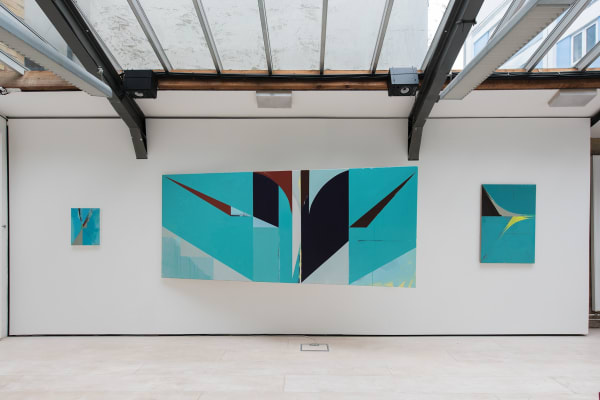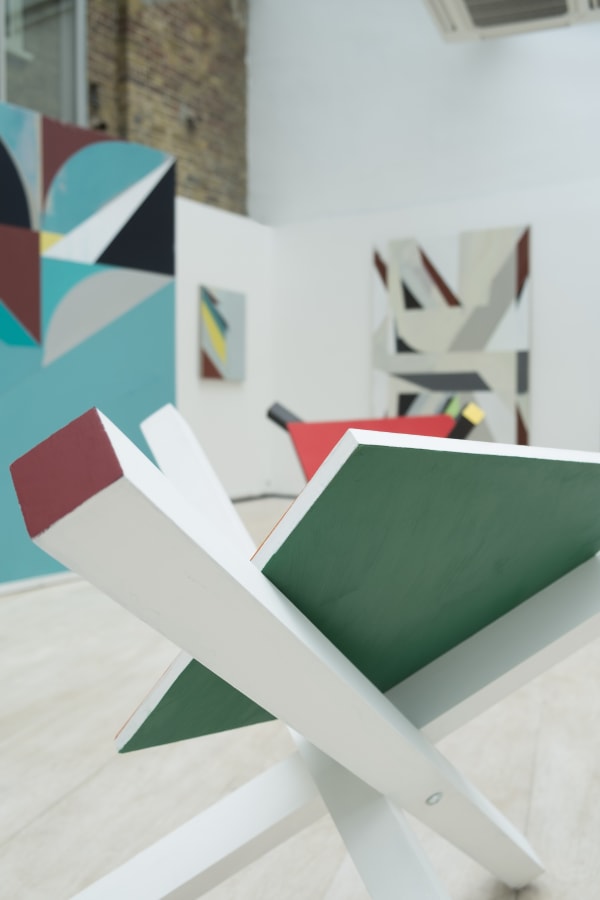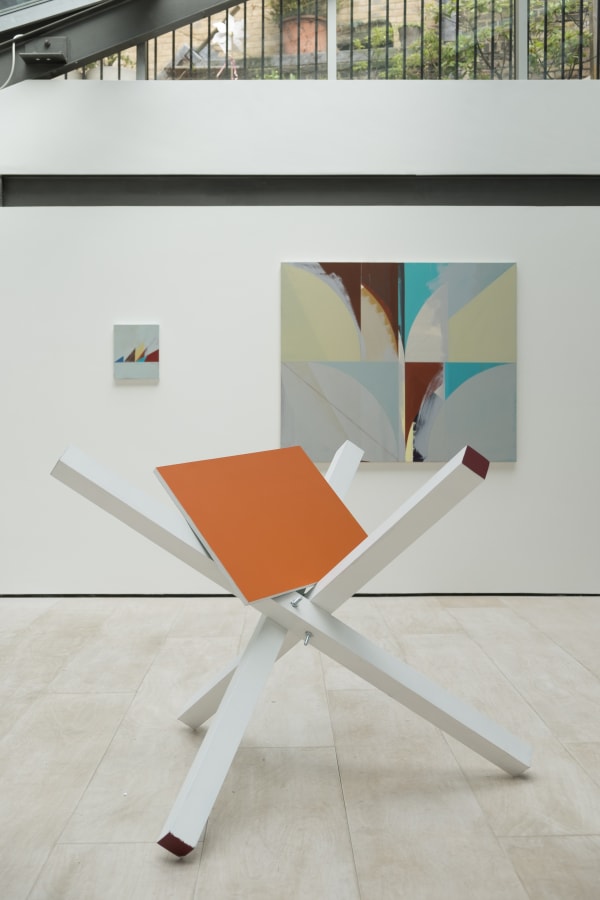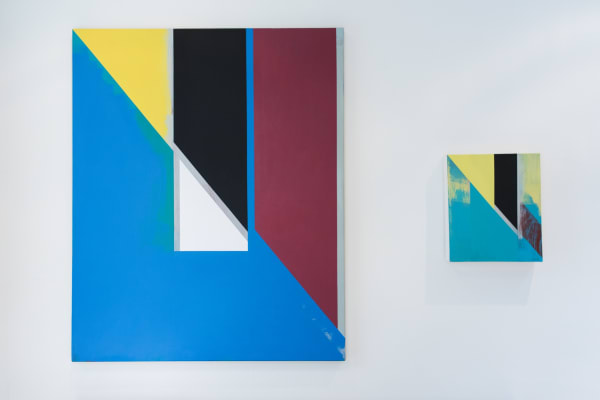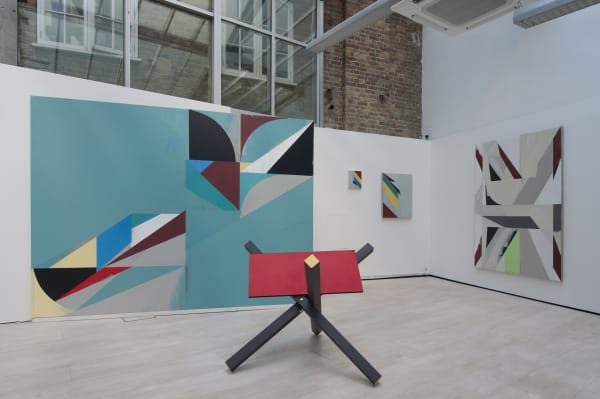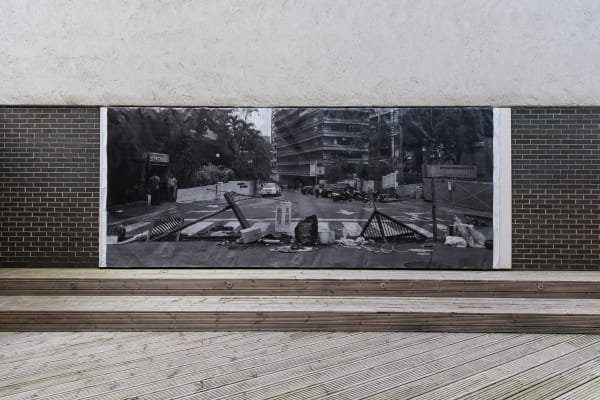Jaime Gili: Guarimba
“Painting, for me, often means engaging in an endless succession of quests and discoveries that eventually become fixed”
Jaime Gili
Gili belongs to an extraordinary generation of Venezuelan artists who necessarily continue to examine the place of their practice within their inheritance of one of the most interesting Modernist movements in Latin America. In the 1950s, architects like Carlos Raúl Villanueva encouraged Venezuelan artists to redefine public space by integrating modern architecture and visual arts. The following generations of artists grew in the midst of this coalescence. But they also inherited a country whose national economy was based on a volatile oil industry and, more recently, experienced the political meltdown of the democratic system, ending in the current political conflict.
Gili’s work inhabits the gaps of the unfinished Modernist project. It is a result of detailed and impulsive bouts of research into the life and work of key Modern architects (Carlos Raúl Villanueva, Gio Ponti, Carlo Scarpa, Max Bill, and more recently Sir Frederick Gibberd), with the artist constantly adding elements to a very personal language, resulting in spellbinding paintings that reflect a dialogue where truth and fiction interlace.
Renowned for a practice that moves away from the boundaries of the canvas, Gili’s painting often appropriates, occupies and affects the spaces they inhabit. Recent public interventions, such as the boulevard he designed in Margarita and the public work in a park in the Eastern part of Caracas, continue the Modernist integration. For this exhibition, Gili will continue this practice of appropriation of the architecture.
For this exhibition the artist has made a new series of works which will interact with the space. The paintings will become conceptual Guarimbas, referencing Rosalind Krauss seminal text The Grid, as much as the makeshift barricades put up in Venezuela as a form of protest, blocking normal city life against the current regime. ‘And just as the grid is a stereotype that is constantly being paradoxically rediscovered, it is, as a further paradox, a prison in which the caged artist feels at liberty. For what is striking about the grid is that while it is most effective as a badge of freedom, it is extremely restrictive in the actual exercise of freedom.’ (1)
Gili has developed a unique style that represents a highly distinctive point of convergence between a specific inherited European modernism interlaced with Venezuela’s past historical modernism, and the current affairs. Aware that abstract painting cannot place current reality as such on to the canvas – for instance, the reality of protests and the disintegration of democracy – Gili takes on these issues through their tempo and the painting’s own slow process of becoming. Thus, gradually and looking within its own limitations, Gili’s abstract paintings attempt to bridge the voids of time and space, the final message being one of a positive future.
** Guarimba is a Venezuelan word that could be translated as a “makeshift barricade”. Guarimbas were common in Spring 2014 on the streets of Venezuela as a way of protest, blocking normal city life against the regime. Many youth were detained and imprisoned thereafter. At the time, Gili likened the barricades – a response to what was happening – to the paintings he was producing in London: “the work is a final guarimba that decides which elements are admitted into it. A filter that is itself the response to what is happening (…) Painting is a political act, but a terribly slow one.” (Jaime Gili 2014)
(1) RosalindKrauss,‘Grids’,inTheOriginalityoftheAvant-GardeandOtherModernistMyths, Cambridge, Mass. and London 1985, p.1.
